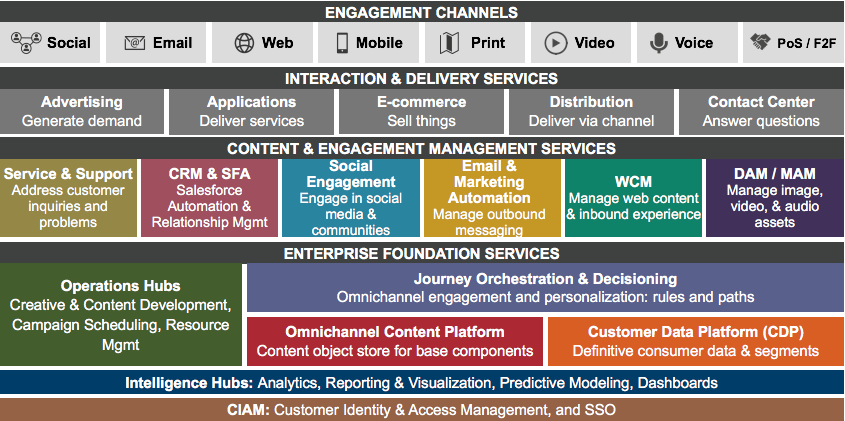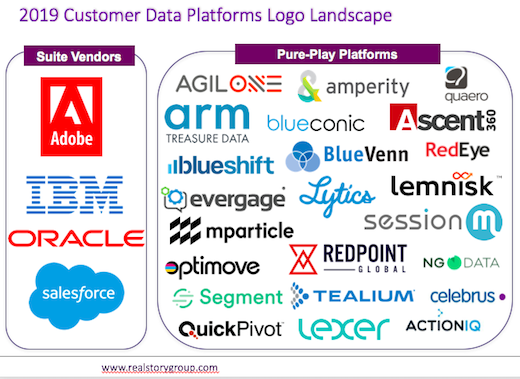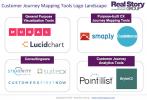To Get from MarTech to CX You Need to Strengthen Your Core
For most of the past decade, large enterprises have focused on scaling and modernizing their martech and digital experience (DX) stacks, pushing ever-richer content and experiences through web content management (WCM) systems, marketing automation/ESP platforms, and CRM environments, among others. This made sense for improving digital customer engagement in those platforms, but has led to a kind of muscle imbalance in our stacks, where you've invested in upper body strength at the expense of your core.
Invest in Your Core
Let's describe this another way: if you're building your pectorals and biceps and not your core muscles, you might appear stronger on the outside, but you're actually reducing your agility and risking injury in the long run. Don't take my word for it...the Mayo Clinic says:
Strong core muscles are also important for athletes, such as runners, as weak core muscles can lead to more fatigue, less endurance and injuries. Weak core muscles can also leave you susceptible to poor posture, lower back pain and muscle injuries.
When you apply personalization to your website, and customize media assets for social networks, and then deliver special offers via email, you’re effectively customizing experiences within each channel, but potentially confusing your customers. On the surface, it appears like you’re showing digital strength, but in practice, your just creating isolated silos of customer engagement. You're transferring digital pain and fatigue to your customers.
Your customers don't want engage with you differently across channels, when brands like Netflix and Amazon have trained them to expect a more coherent, omnichannel experience.
From top-heavy to core-strong
Building your core means taking a more enterprise-wide approach that will redirect investments lower in your body...er...tech stack. Going forward it will matter less what you do within channels and more what you do across channels.
To do that, you’re going to need to rethink your stack and move from martech to core, enterprise-wide CX.

Real Story Group’s Omnichannel Stack Reference Model. Note especially the critical services in the core "Enterprise Foundation" layer.
In particular, you’ll want to explore four key solutions for supporting the enterprise-wide customer experience. Critically, each of these platforms lives underneath your existing customer engagement solutions and ideally will serve them all independently. Think of them as four different muscle groups, each requiring careful attention.
- Customer Data Platforms (CDPs), a single, unified datamart of extended attributes and segments that marketing and engagement platforms need to engage intelligently with individual prospects and customers (Get CDP vendor evaluation sample)
- Journey Orchestration Engines (JOEs), to serve as a kind of traffic management system, gathering information on real customer journeys across enterprise touchpoints, and directing how and where they should be treated going forward — regardless of channel (Get JOE vendor evaluation sample)
- Omnichannel Content Platforms, to support a single source of the truth for re-usable content that you can confidently and consistently syndicate across all your customer and prospect touchpoints
- Omnichannel Operations Hubs, to support internal collaboration across business units, creating the right assets, coordinating the right campaigns, and measuring outcomes across channels
Key technology buyer considerations
Based on RSG's experience working with large enterprises using these platforms, we can generalize about three key considerations for technology customers looking to bolster their core.
1. These are highly fragmented marketplaces
If your enterprise is exploring omnichannel tools to deploy enterprise-wide, the good news is that you’ll encounter almost an embarrassment of supplier choices. The bad news is that your team may struggle to differentiate among them — though once you get beneath the covers, you’ll see stark contrasts in terms of architectures, performance levels, use-case emphasis, pricing models and geographic footprint.

The Customer Data Platform Market is highly fragmented...and still growing.
How’s an enterprise selection team to choose? We always recommend taking a business-focused, use case-based approach. Across nine archetypal CDP use cases, the typical vendor only excels at three or four, so prioritization becomes extremely important here.
Like most marketplaces, you have a choice between large CX and marketing cloud suppliers, and a number of (typically newer, more focused, but smaller) pure-play vendors. Which brings me to...
2. You shouldn’t default to old-line suite vendors
Chances are, your enterprise already licenses some technology from at least one of the big martech "suite" vendors: Adobe, Oracle, Salesforce, IBM (albeit selling these tools to HCL and Centerbridge).
These vendors focus very much on customer-facing engagement systems and have invested heavily in ramping up those toolsets. They want to build your pecs and not your abs. They've arrived somewhat late to the party in terms of providing omnichannel capabilities to build your core strength, which arguably would erode the value of some of their beefy (but silo-bound) engagement platforms. So my advice to you: don’t default to martech suite vendors as you look to develop enterprise-wide services. In fact, consider this an opportunity to reduce your level of investment in these platforms as you build out your stack core.
3. Carefully create boundaries and test before you buy
Vendors always push boundaries with their tools – e.g., building a CDP into a JOE, or saying that their WCM platform is really an omnichannel content platform (hint: it’s not). To some extent vendors are following desires among customers for more bundled services. But I think you should resist that temptation.
The smart omnichannel stack owner will carefully create service boundaries to avoid unnecessary overlaps and attendant employee and customer confusion. Isolate muscles and work on building those that are weaker. Focus on what a vendor does really well, not what they say they can do in aggregate. The best way to discover the truth is to test thoroughly before you buy any technology.
From here to there
I don’t know any firm that has yet built a truly comprehensive omnichannel stack...yet. The key thing is to make an exercise plan and start transitioning. Hopefully you find the reference model diagram useful to your enterprise, but of course, the transition from martech to CX is more than just a technical challenge. RSG’s Stack Leadership Council is evolving some approaches to governance and operations in this new world. Contact us to see if your enterprise is eligible to participate in this private group.








